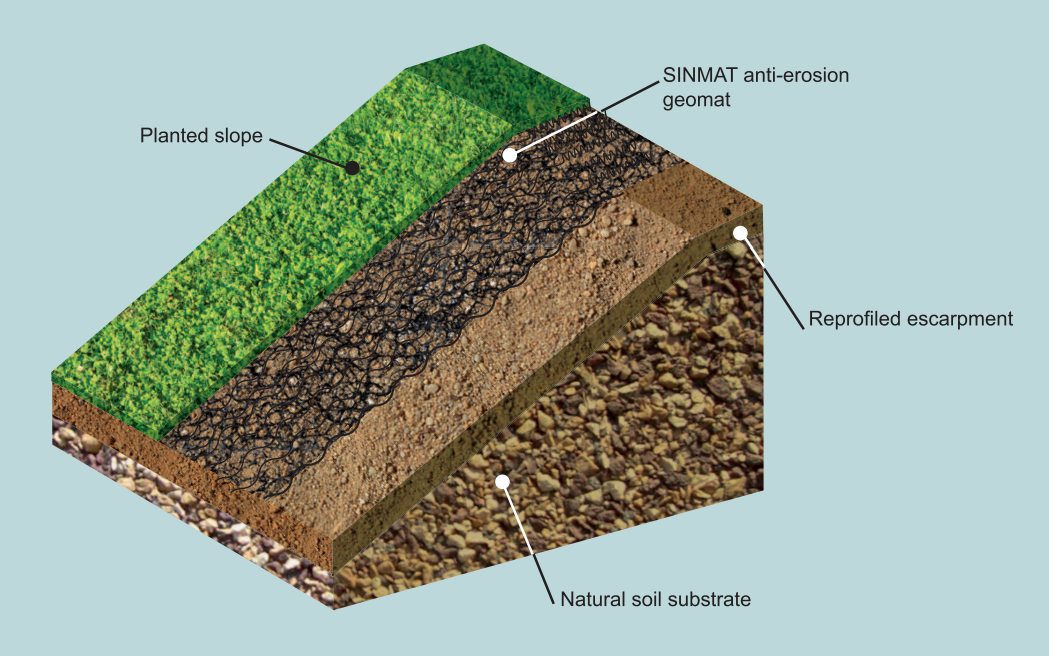Hydroseeding Solutions: A Greener Technique to Land Management
Wiki Article
Ideal Practices for Disintegration Control in Construction Projects
Are you functioning on a building project and worried regarding erosion control? In this article, we will certainly direct you through the best techniques for protecting against disintegration on your website. silt fences. Obtain ready to take on erosion head-on and make sure the success of your building and construction project.5 Necessary Erosion Control Techniques

To successfully manage erosion on your building site, you'll need to execute important techniques such as slope stablizing and debris control procedures. Slope stabilization is essential in preventing soil disintegration on high slopes. One more effective strategy is the usage of erosion control blankets or mats, which are positioned on the incline and assistance keep soil fragments while enabling greenery to grow.
Reliable Debris and Overflow Management

You can properly handle sediment and drainage in your building task by executing appropriate disintegration control steps. An additional important method is the execution of erosion control blankets or floor coverings. By executing these disintegration control measures, you can successfully take care of sediment and runoff in your building task, reducing the effect on the setting and abiding with regulatory demands.
Secret Factors To Consider for Incline Stabilization
You require to carefully analyze the slope's qualities, such as its structure, drain, and angle patterns. Look for indications of erosion, such as revealed origins, fractures, or down soil.One more choice is to plant greenery on the slope, as the roots can assist anchor the soil and control disintegration. Furthermore, mounting erosion control coverings or mats can supply immediate defense while vegetation comes to be recognized.
It's crucial to routinely check the stabilized slopes to guarantee their efficiency. Keep an eye out for any kind of signs of movement or erosion, and take instant activity if required. Routine upkeep, such as inspecting and fixing any damaged steps, is additionally vital to ensure long-term stability.
Ideal Practices for Plant Life and Soil Security
If essential,One reliable way to protect greenery and soil on inclines is by regularly inspecting for indications of disintegration and taking immediate activity. By being observant and positive, you can stop additional damages and make sure the security of the slope. Begin by checking the slope for any type of signs of erosion, such as exposed roots, bare soil spots, or debris buildup at the bottom. It is important to resolve the problem immediately if you observe any of these indicators. Implement disintegration control procedures such as mounting disintegration control coverings, mulching, or also creating preserving wall surfaces if required. In addition, growing plants can considerably aid in stabilizing the soil. Choose indigenous plants that have deep root systems, as they are a lot more effective in protecting against disintegration. Make certain to frequently assess the wellness of the greenery and give essential maintenance, like watering and fertilizing. Bear in mind, erosion can promptly aggravate and cause extreme damage, so it's vital to resolve it as quickly as possible. By taking aggressive steps and on a regular basis keeping an eye on the incline, you can secure the greenery and dirt, guaranteeing the lasting stability of the location.Carrying Out Proper Water Drainage Systems
To successfully apply correct drainage systems, it's important to take into consideration the incline gradient and dirt type. When it concerns handling water circulation and protecting against erosion, understanding these elements is vital. The slope gradient plays a substantial duty in determining how water moves across the land. Steeper slopes can lead to faster water flow, increasing the risk of disintegration and flooding. On the various other hand, gentler inclines enable water to stream a lot more slowly, minimizing disintegration capacity. By linked here examining the slope gradient, you can develop an efficient drainage system that accommodates the all-natural water activity.Soil kind additionally affects drain system design. Different dirt kinds have differing levels of leaks in the structure, impacting read the full info here exactly how water is absorbed and drained pipes. Sandy dirts often tend to drain pipes faster due to their rugged structure, while clay soils have a slower drain rate due to their portable nature. Recognizing the dirt kind assists in selecting appropriate water drainage methods, such as making use of absorptive materials or mounting French drains. In addition, taking into consideration the soil features helps protect against waterlogging, which can result in inadequate plant growth and damages to frameworks.
Verdict
In conclusion, when it comes to disintegration control in construction jobs, you should comply with these best practices. Consider slope stablizing approaches to make sure the security of the website. By following these important practices, you can effectively regulate erosion and ensure the success of your construction task.To successfully control disintegration on your building site, you'll require to carry out vital techniques such as incline stabilization and debris control measures. Slope stabilization is important in avoiding dirt disintegration on steep inclines. One more effective method is the use of erosion control blankets or mats, which are put on the slope and aid retain soil particles while permitting vegetation to grow. An additional alternative is to grow plants on the incline, as the roots can help secure the dirt and control erosion. Implement disintegration control measures such as installing disintegration a knockout post control blankets, mulching, or also constructing preserving walls if needed.
Report this wiki page